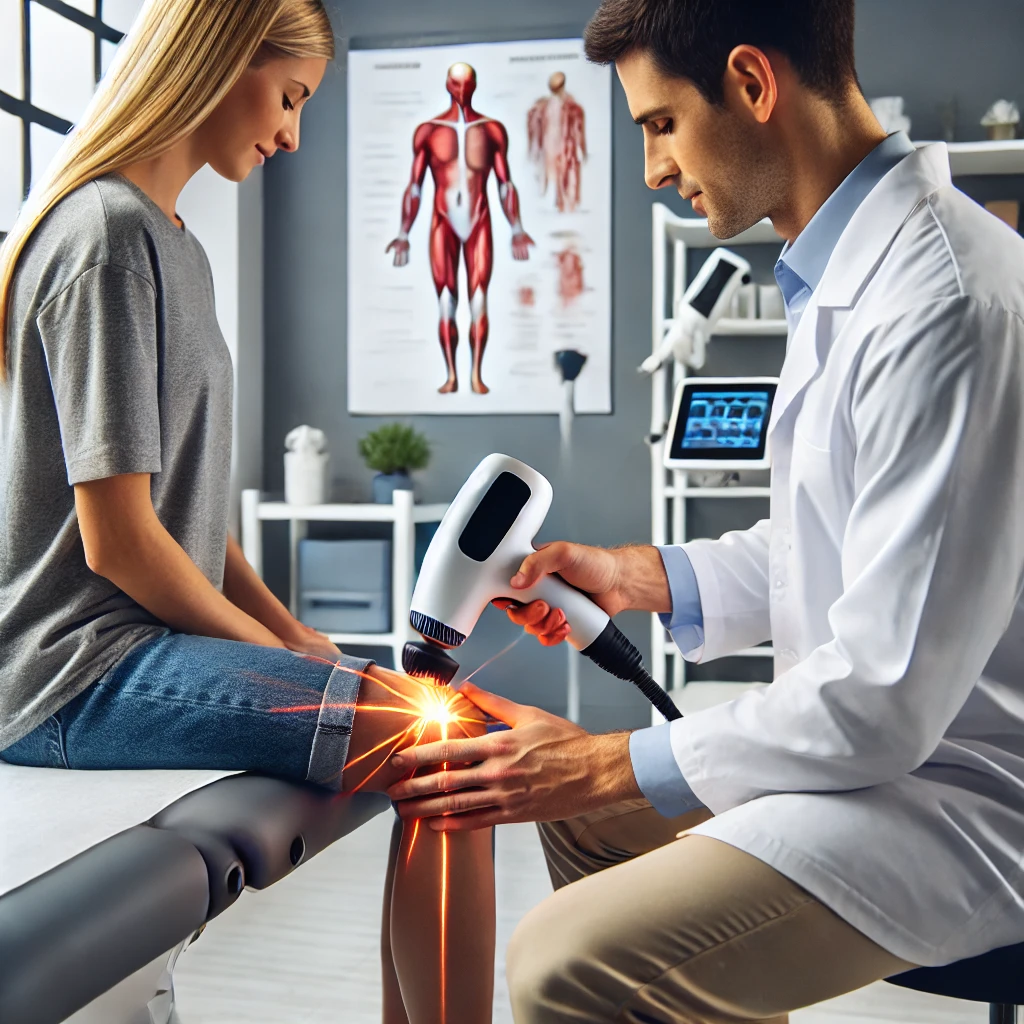A recent study1 published in Lasers In Medical Science revealed an astounding difference by introducing laser therapy for elderly patients affected with degenerative arthritis in both knees. One hundred participants were divided in to two groups. Both groups received traditional physical therapy that was identical in both type and length. Group B received laser therapy in addition to the physical therapy, while Group A did not receive any laser therapy. After the therapy was complete for both groups, there would be a follow-up six years later. Both groups had an equal opportunity for knee joint replacement at any time during the six years if their pain levels necessitated it.
The difference was quite astonishing at the six year follow-up. Group A, who received the physical therapy alone, had a total of 9 knee joint replacements performed during the six years. Group B, who received the laser therapy in addition to the physical therapy, only had 1 knee joint replacement performed. That’s nearly a ten-fold difference!
How Does Laser Therapy Work?
Deep Tissue Laser Therapy is a high-intensity laser that uses a specific wavelength of infrared light to accelerate the healing process at the cellular level. This is a similar process to photosynthesis that happens with plants when they are exposed to light. Mitochondria inside the cells of your body respond to certain wavelengths of light, in turn accelerating the regrowth and regenerative processes in your cells, allowing them to regenerate and heal faster. This includes cells that make up your cartilage, muscles, tendons, ligaments, nerves and bones.
Deep Tissue Laser Therapy is also very effective at reducing pain and inflammation. Many patients notice a significant decrease in pain, even after their initial session.
Laser therapy also helps to improve circulation to the affected area by dilating the blood vessels so that they can deliver more nutrients as well as promoting the growth of new capillaries in damaged tissue to speed the healing process.
Many professional athletes and teams utilize Deep Tissue Laser Therapy to not only speed up healing time for their injuries, but to promote an optimal formation of scar tissue. This can help to reduce the likelihood of re-injury.
What To Expect
n
Laser Therapy is a very safe treatment and has been cleared by the FDA for treating pain. The sessions are typically 5-10 minutes long. The laser creates a warm sensation on the skin of the treated area, which many patients comment that it is very calming and relaxing. Many patients notice an immediate reduction in pain following a therapy session, but the therapeutic benefits continue after the session is over. Laser therapy is cumulative, meaning that each session builds upon previous sessions. Most conditions require 6-10 sessions for best results.
Many other conditions can benefit from Deep Tissue Laser Therapy including low back and neck pain, headaches, carpal tunnel syndrome, plantar fascitis, shoulder pain and rotator cuff injuries, arthritis, neuropathy and hip pain. Many veterinarians are also using laser therapy to help animals suffering from similar conditions.

